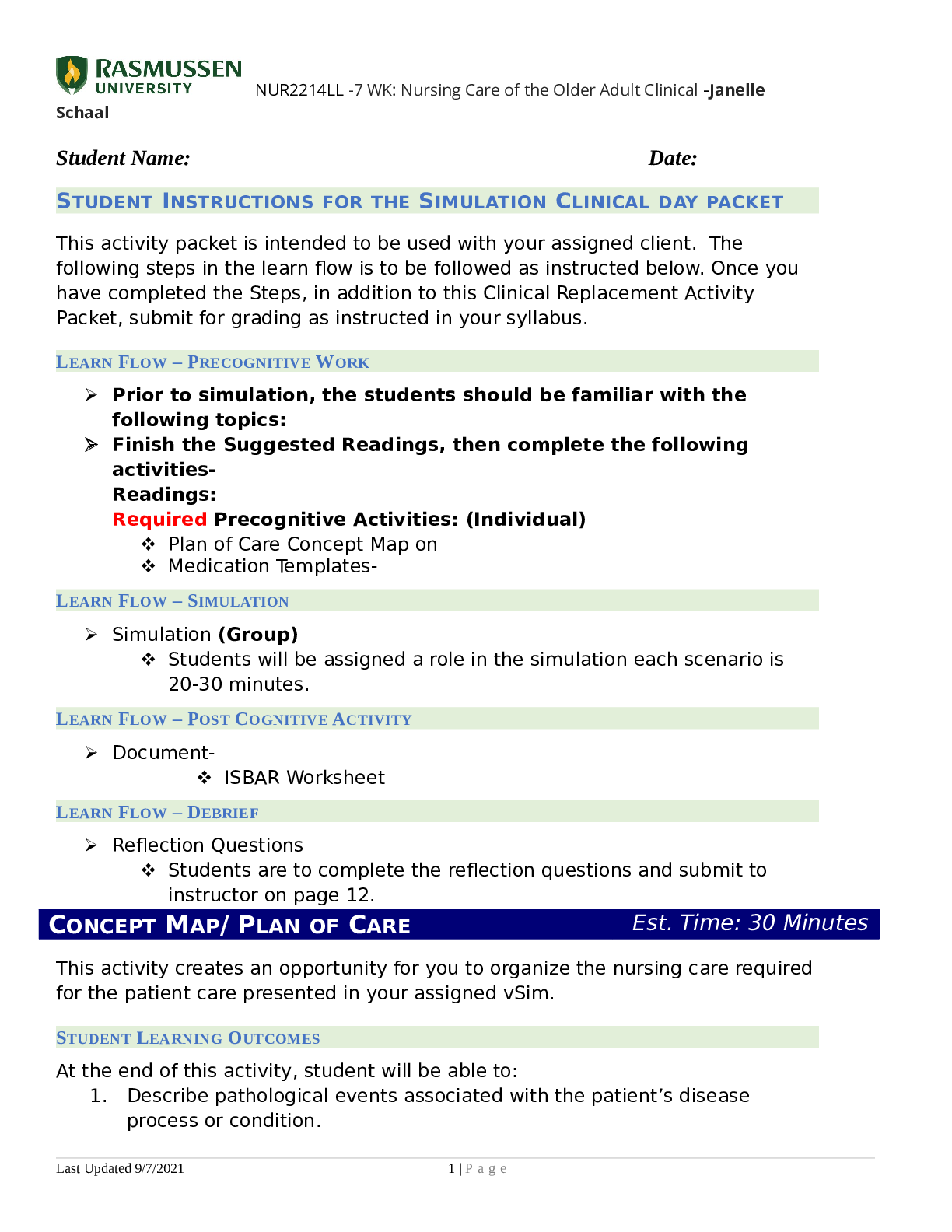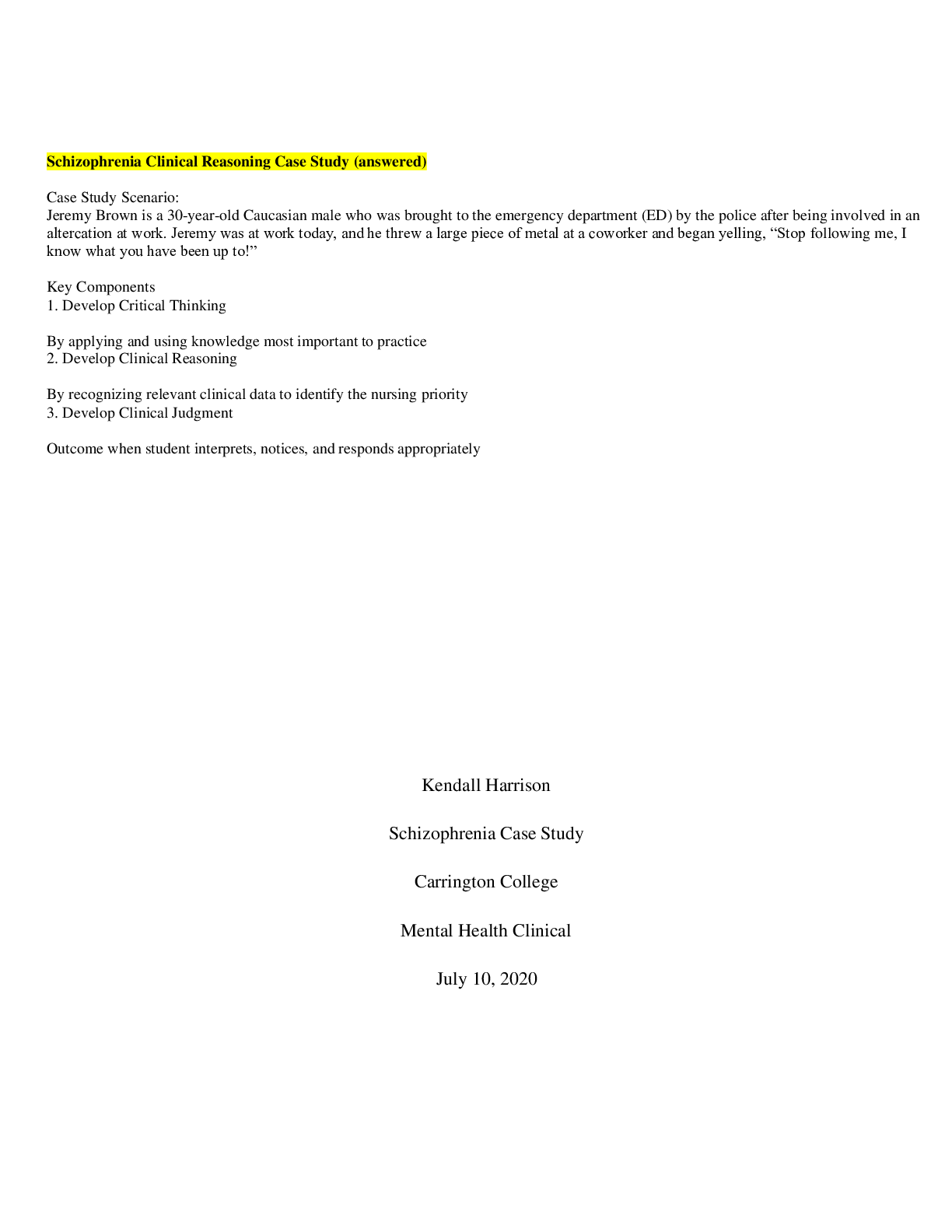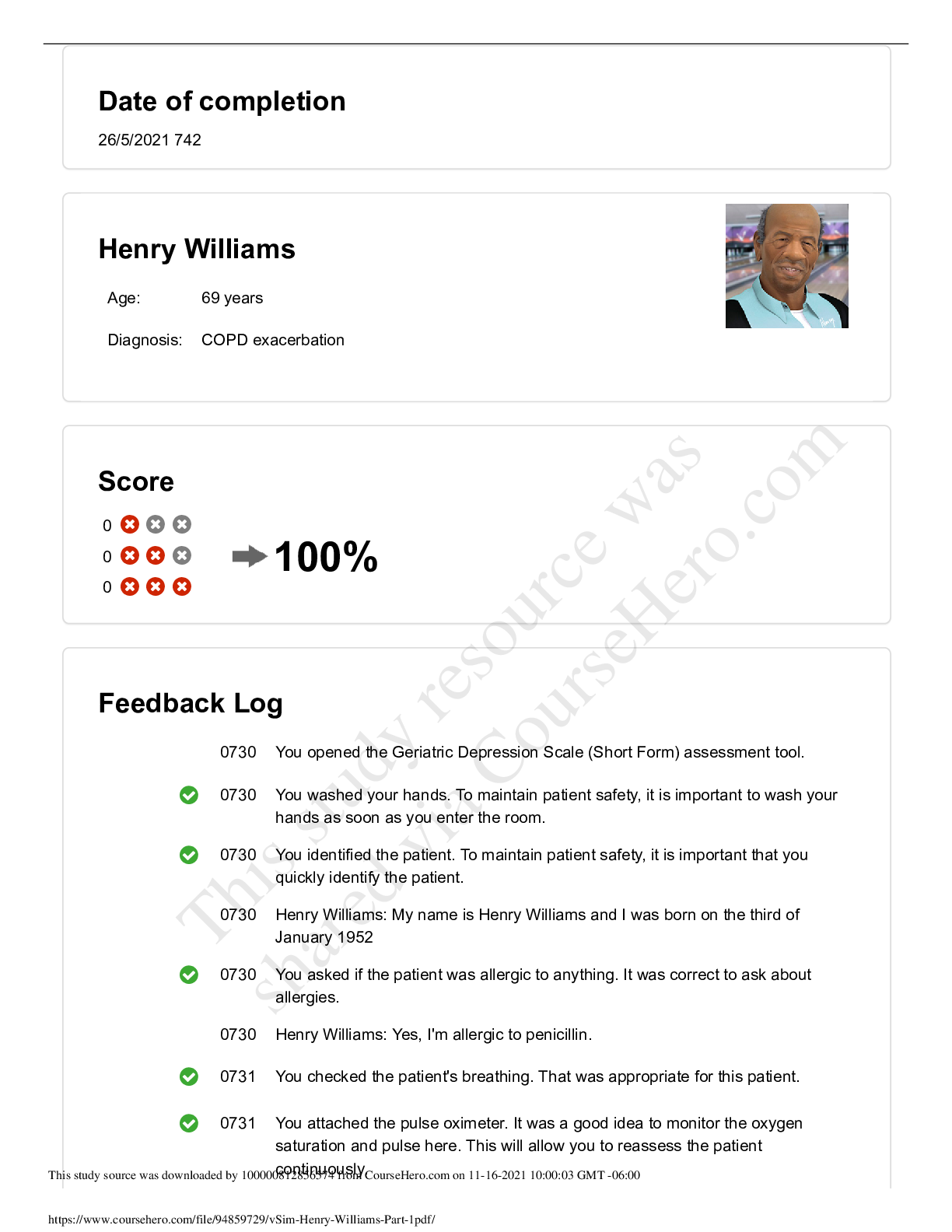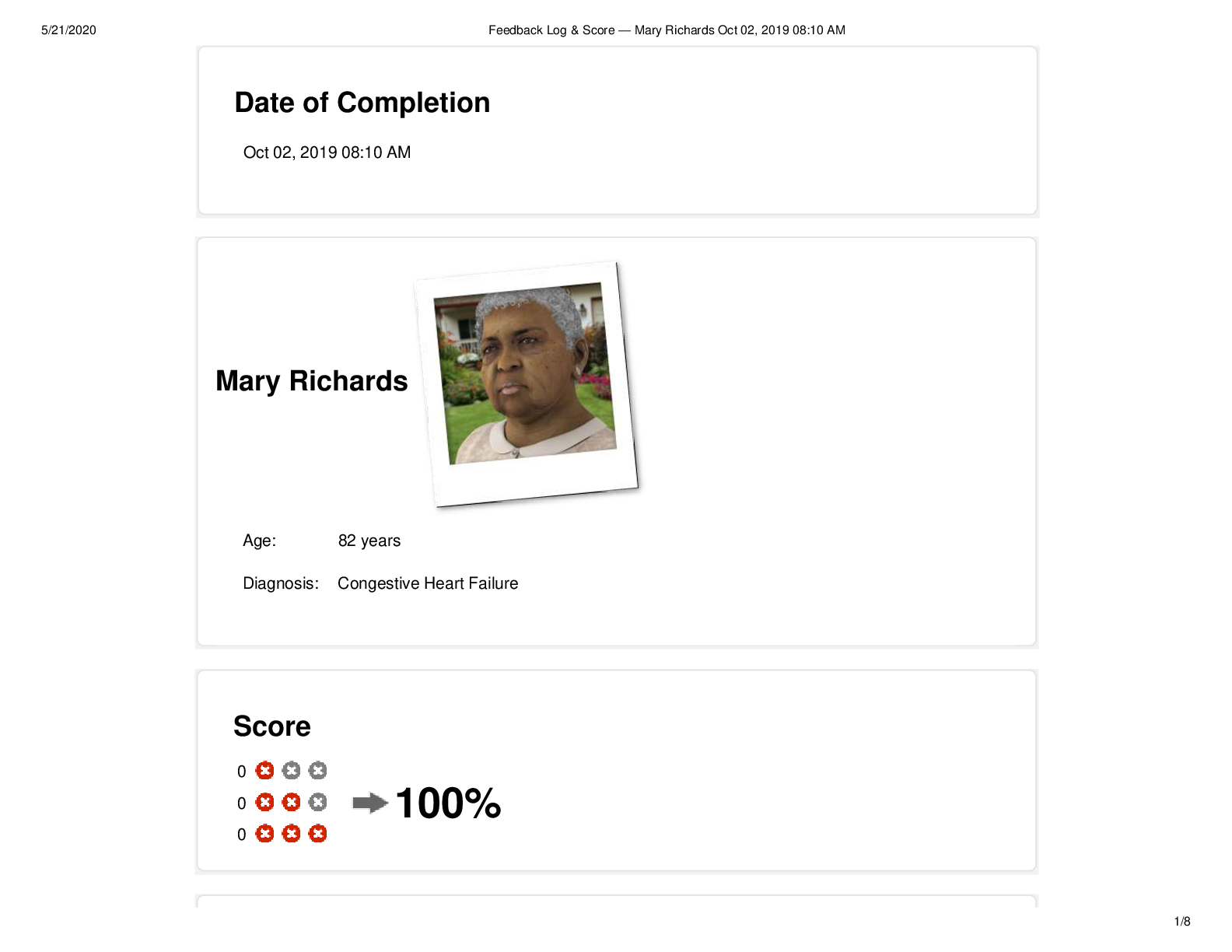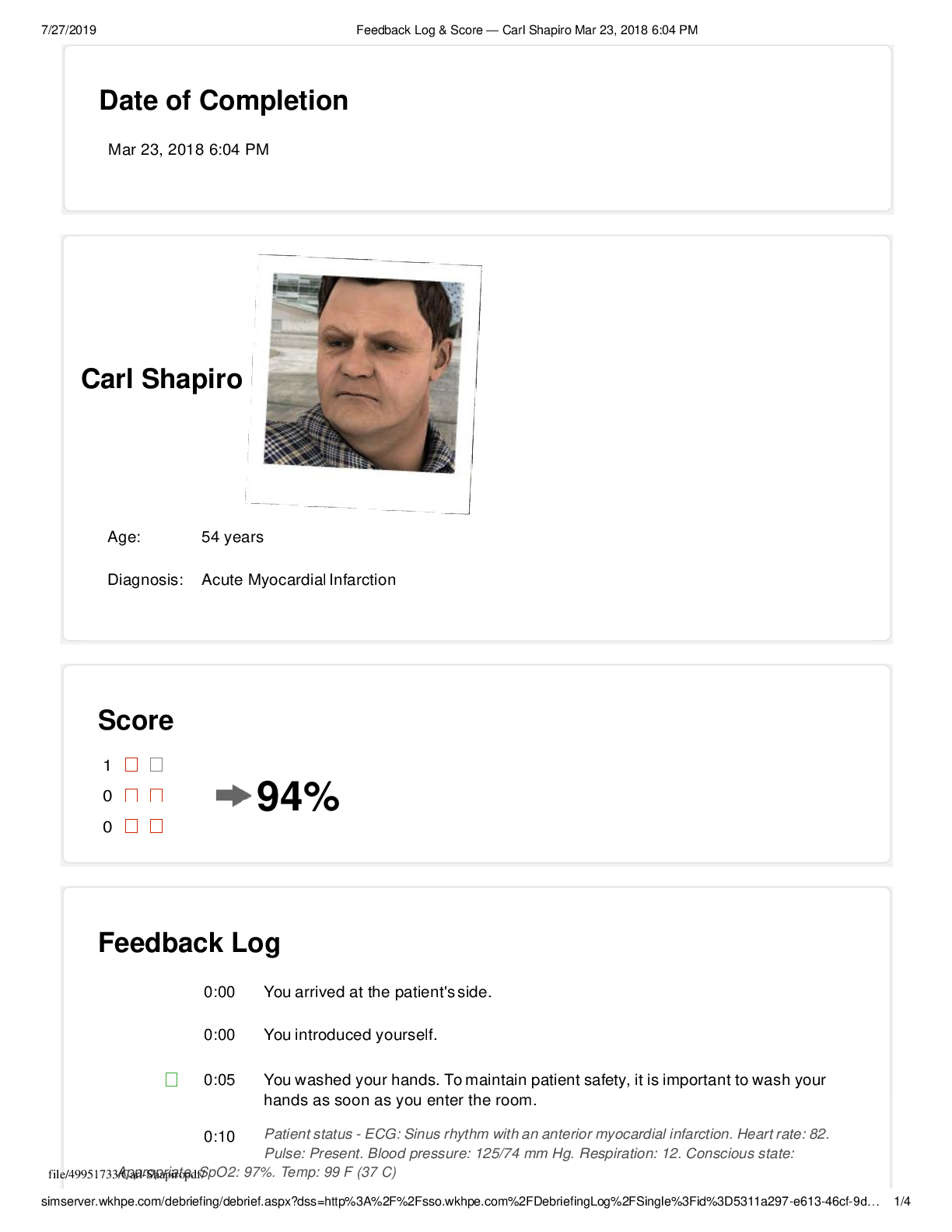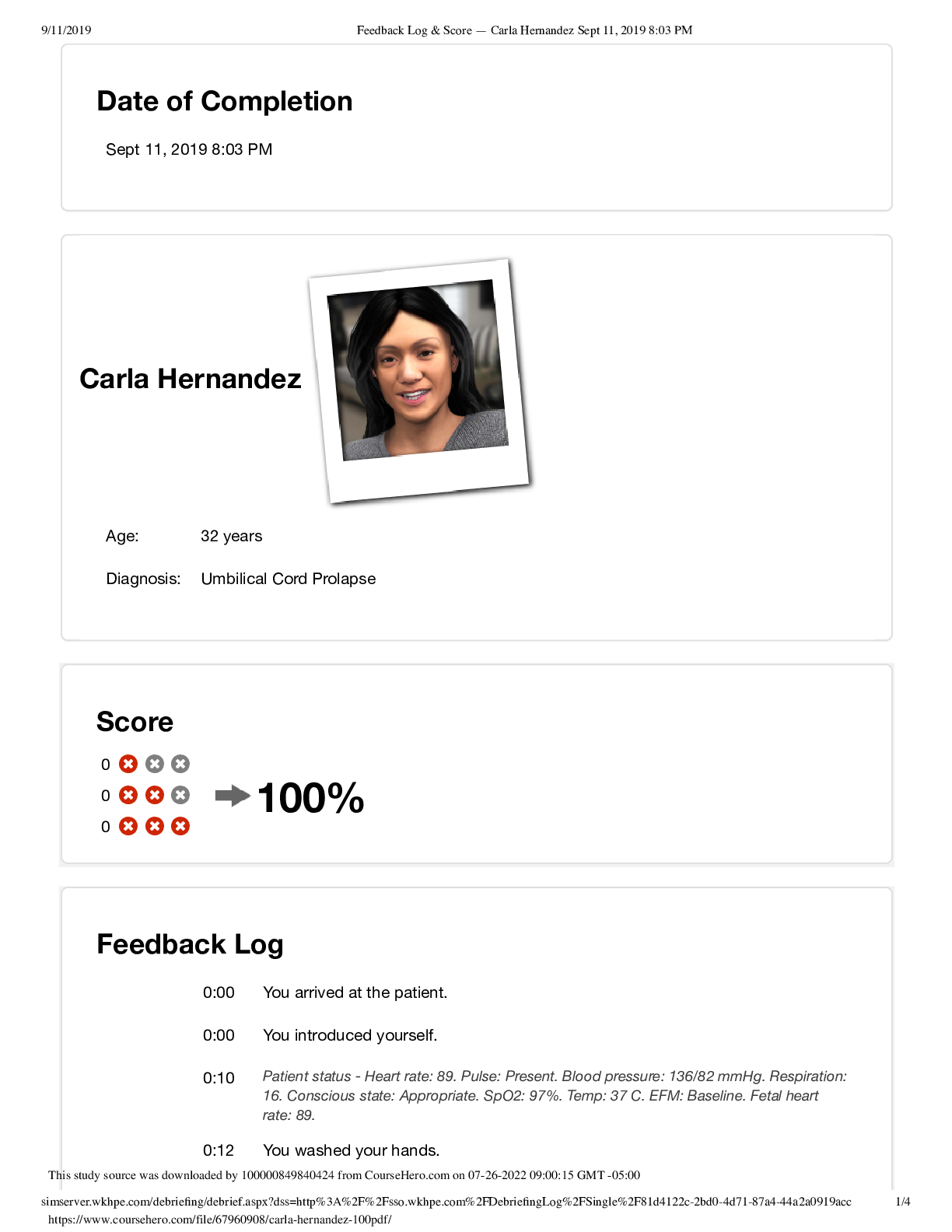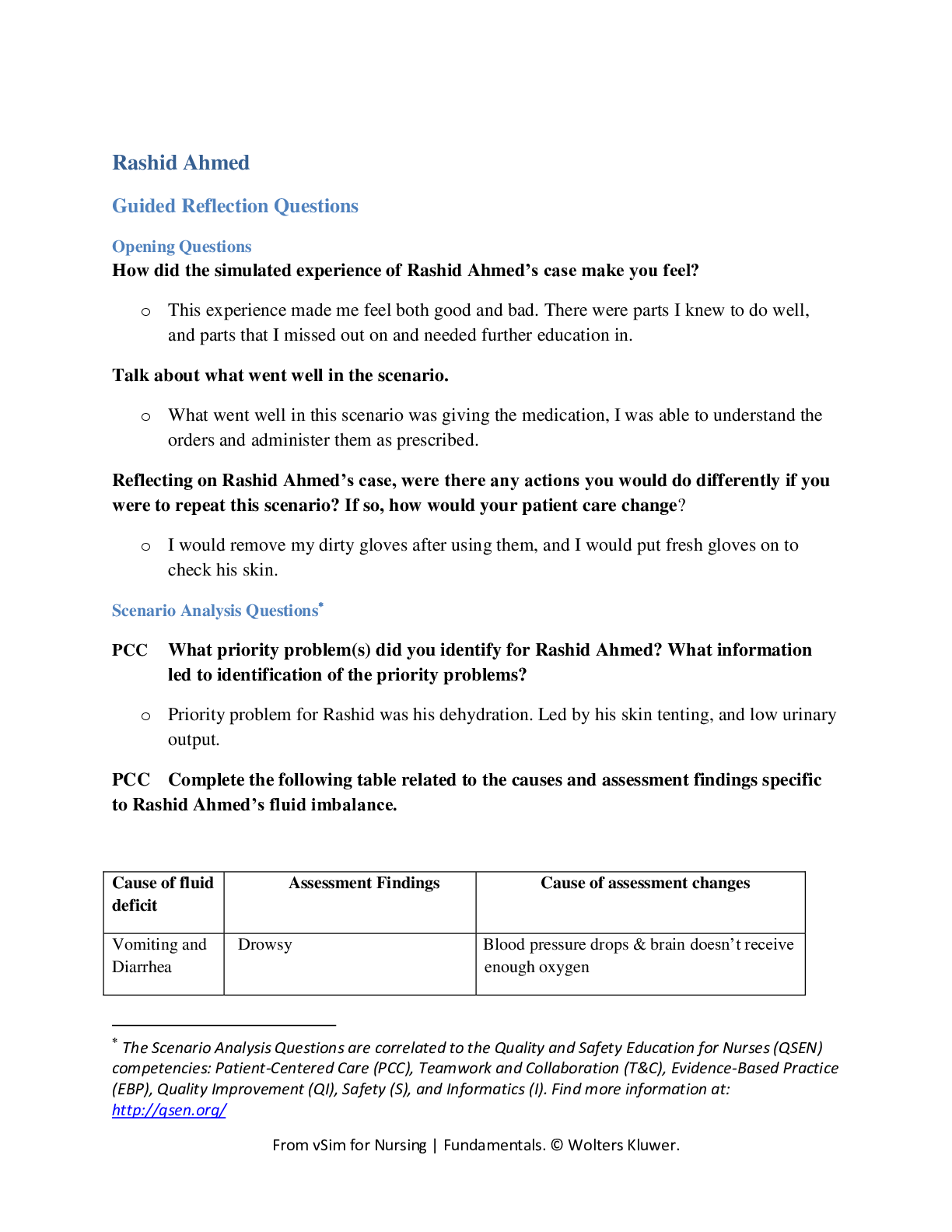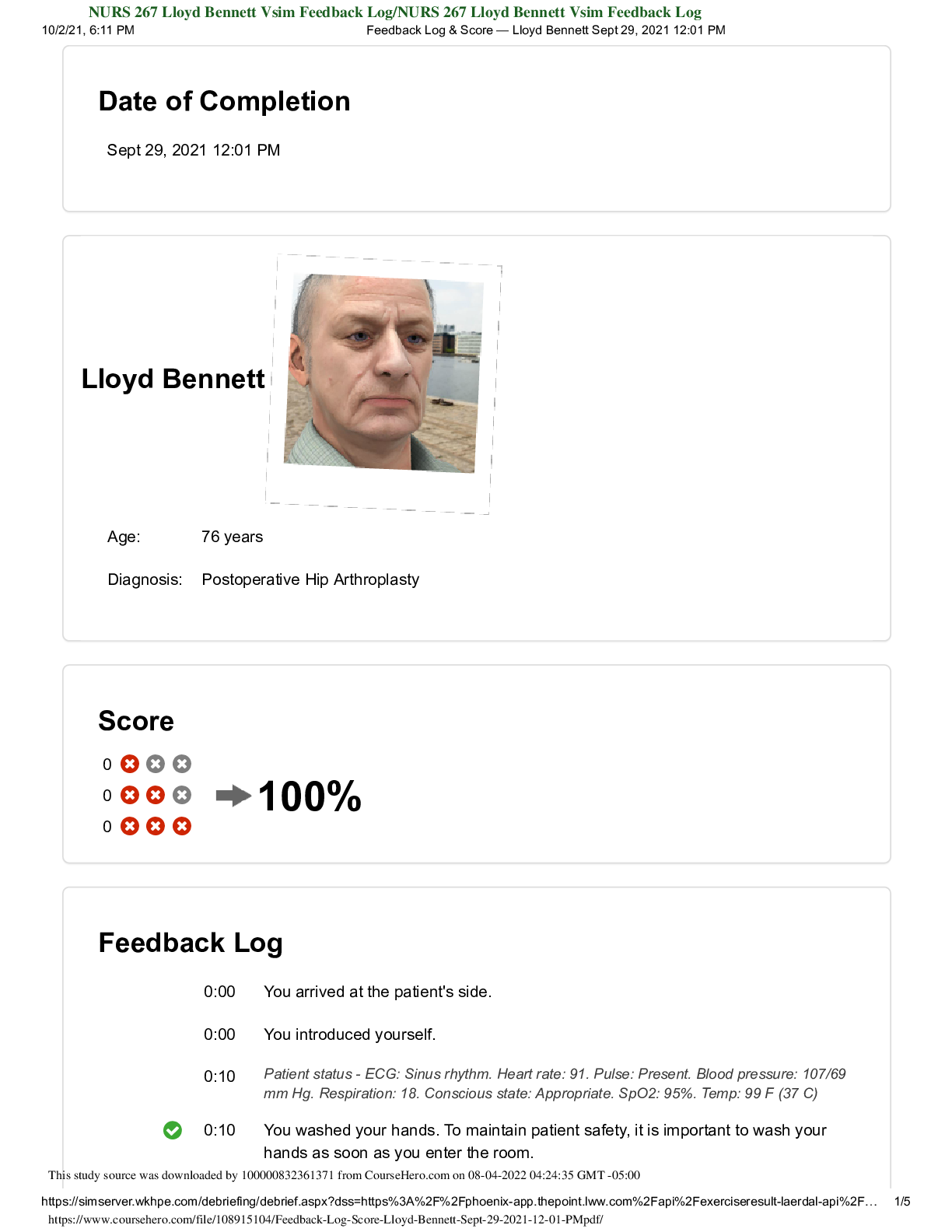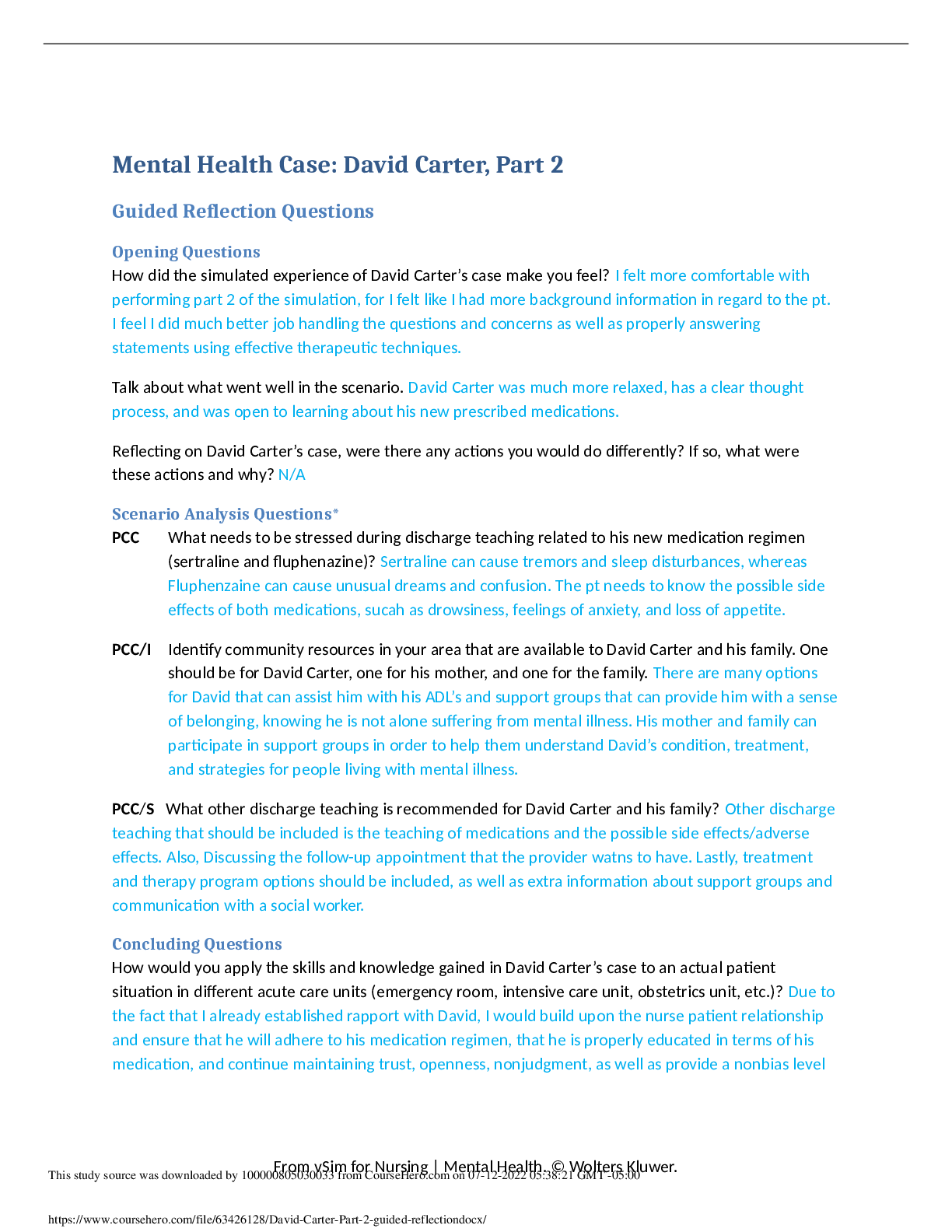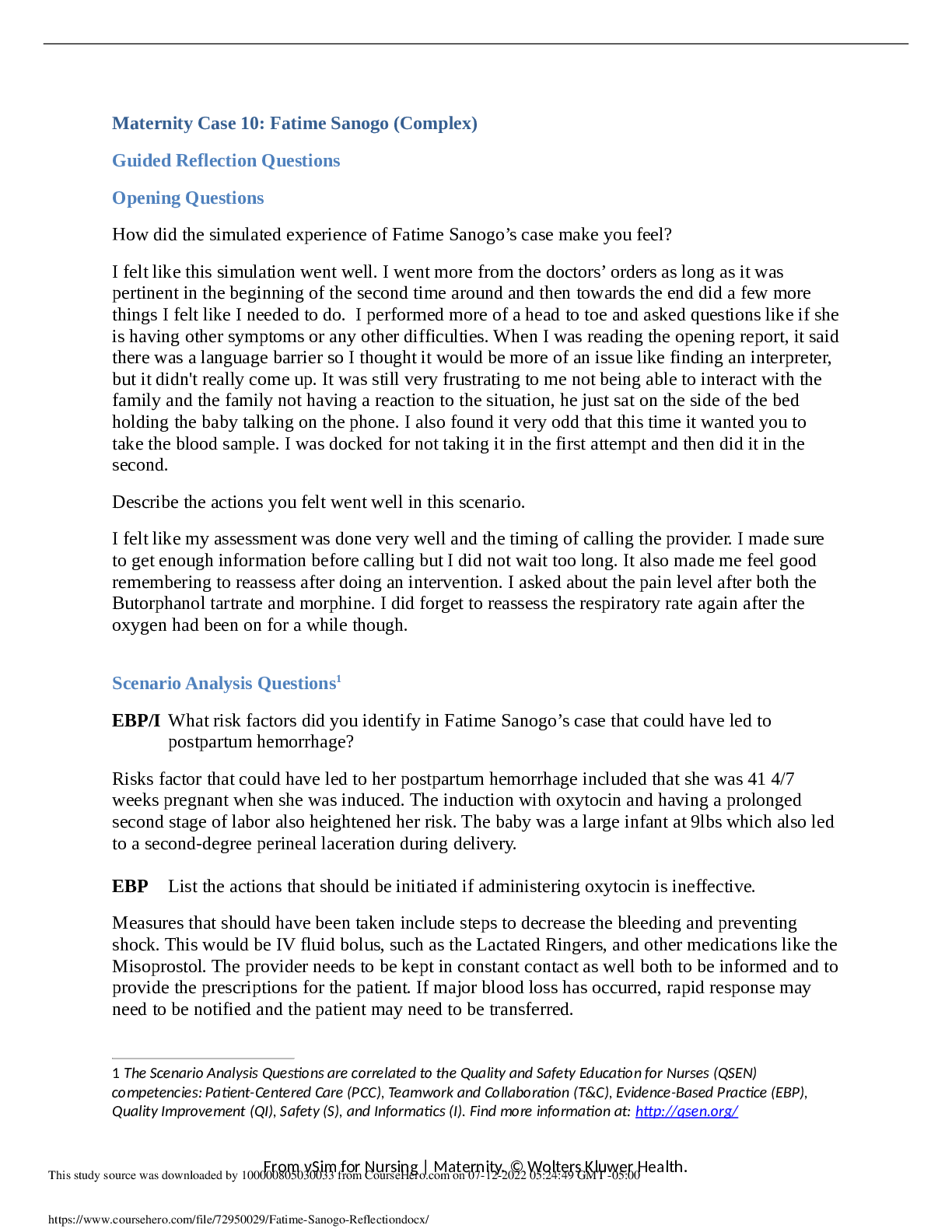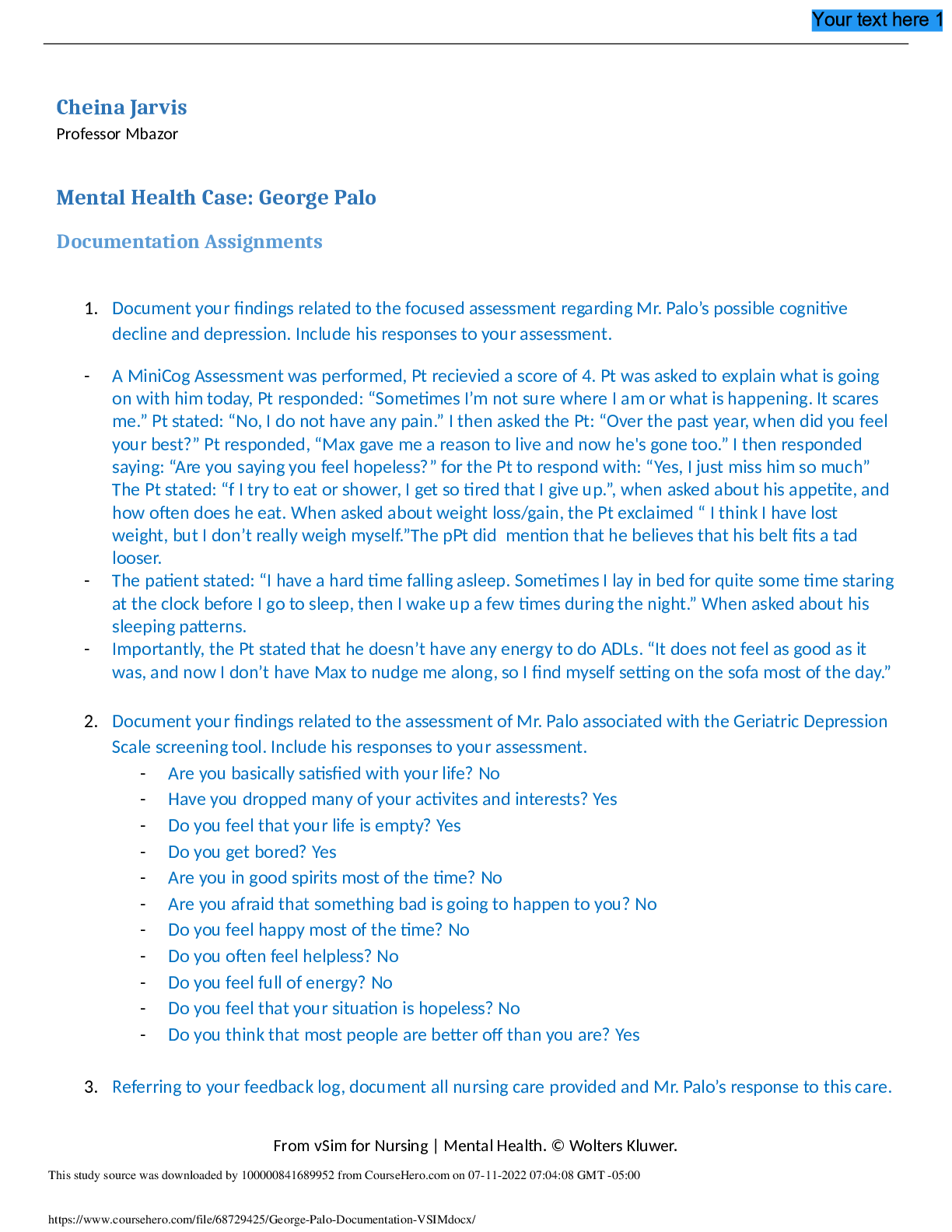*NURSING > vSim For Nursing > Randy Adams Feedback Log | PSYCH 101 Diagnosis PTSD (Score 96%) 2020 (All)
Randy Adams Feedback Log | PSYCH 101 Diagnosis PTSD (Score 96%) 2020
Document Content and Description Below
Randy Adams _ Feedback Log & Score _2020 PSYCh 101 _ Diagnosis_PTSD Complicated by Traumatic Brain Injury 0:56 You asked if the patient had any known allergies. 0:59 You performed medication reconcili... ation. 1:22 You asked the patient: Is it OK for your wife to be here, while we talk? It was correct to let the patient give his consent for letting his wife be a part of the interview. 1:34 The patient said: I'm not sure what I would do without Joy.nYou answered: It sounds like your relationship with your wife is very important to you. nYou used the therapeutic technique of encouraging expression. 2:49 You called the provider. You should submit the assessment forms before calling the provider. 3:12 You asked the patient: What is your full name? The patient said: My name is Randy Adams. 3:18 You asked the patient: Have you taken your medication? The patient said: I don't have any prescribed medications. 3:24 You asked the patient: Can you tell me a little bit more about what's going on with you today? It was appropriate to ask the patient what was going on with him to get an understanding of this. 3:40 The patient said: The doctors at the VA want me to talk about all the things from the past that make me uncomfortable. Talking about the past won't help.nYou answered: Are you uncomfortable when you talk about the past? nYou used the therapeutic technique of making observations. 3:48 You asked the patient: Is it OK for your wife to be here, while we talk? The patient said: Yes. 4:33 You asked the patient: Do you have any difficulty with your breathing? The patient said: No. 4:38 You asked the patient: Do you have chest pain? The patient said: No, I don't. 4:42 You asked the patient: Do you have any pain? 4:53 The patient said: The lights; they make my headache worse.nYou answered: Intolerance to light is a common symptom related to a head injury. nYou used the therapeutic technique of giving information. 5:19 You asked the patient: How would you rate your pain, on a scale of 0 to 10? The patient said: About a 3. 5:28 You asked the patient: On a scale of 0 to 10, how would you rate your level of distress? The patient said: Maybe 4? 5:34 You asked the patient: Where is your pain located? The patient said: I have a headache. 5:44 You asked the patient: What other pain management strategies have you used 5:55 You asked the patient: Would you like a tray with some food? The patient said: No. 5:59 You asked the patient: Would you like a prepacked sandwich to eat? The patient said: No. 6:03 You asked the patient: Have you had any changes in your appetite over the past month? The patient said: My appetite has been about the same. 6:10 You asked the patient: Do you get hungry? The patient said: Yes. 6:13 You asked the patient: How many meals do you eat each day? The patient said: I usually eat three meals a day. 6:17 You asked the patient: Do you eat between meals? The patient said: Yeah, I like to eat. 6:21 You asked the patient: Have you been eating much less or much more over the past few weeks? The patient said: No, not really. 6:31 You asked the patient: Have you lost or gained weight over the past month? The patient said: No, I am about the same weight. 6:37 You asked the patient: Do you notice that your clothes are fitting looser or tighter than they were a few weeks ago? The patient said: No, not really. 6:48 You asked the patient: Tell me about any changes you have had in your sleep over the past few weeks? The patient said: I have had more trouble sleeping. 6:55 You asked the patient: Do you nap during the day? If so, how often and for how long? The patient said: No, not usually. 7:02 You asked the patient: Do you have any trouble falling asleep? 7:16 The patient said: I'll try to lay in bed at night, but then I hear sounds and have to get back up. Joy does not hear them; she says they are in my head.nYou answered: Let's talk more about the sounds you hear. nYou used the therapeutic technique of focusing. 7:35 You asked the patient: Do you wake up in the early hours of the morning and have trouble returning to sleep? The patient said: No, not usually. 7:43 You asked the patient: Do you have nightmares or vivid dreams on a regular basis? 7:58 The patient said: I have these dreams; I can't remember them, but when I wake up, my heart is racing.nYou answered: What seems to lead up to you having these dreams? nYou used the therapeutic technique of placing the event in time or sequence. 8:28 You asked the patient: Approximately how many hours of sleep do you get each night? 8:38 The patient said: I really don't need much sleep.nYou answered: Are you saying that you don't sleep well? nYou used the therapeutic technique of verbalizing the [Show More]
Last updated: 1 year ago
Preview 1 out of 9 pages

Reviews( 0 )
Document information
Connected school, study & course
About the document
Uploaded On
Jun 17, 2021
Number of pages
9
Written in
Additional information
This document has been written for:
Uploaded
Jun 17, 2021
Downloads
0
Views
42


